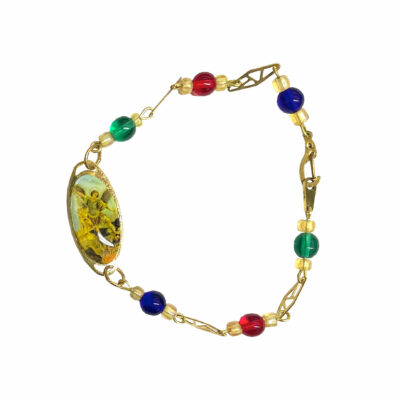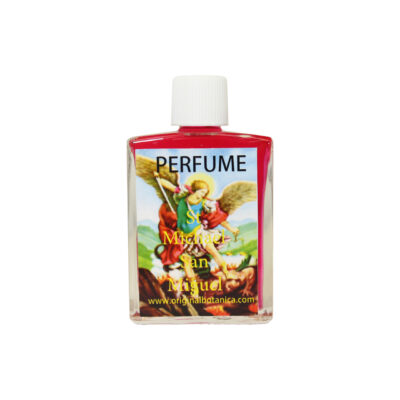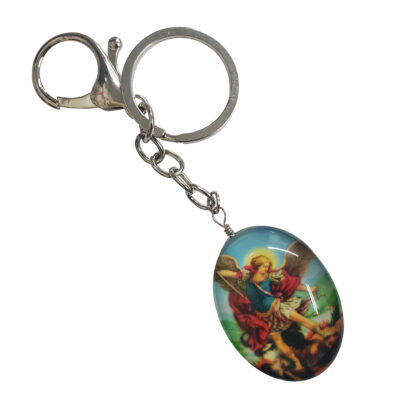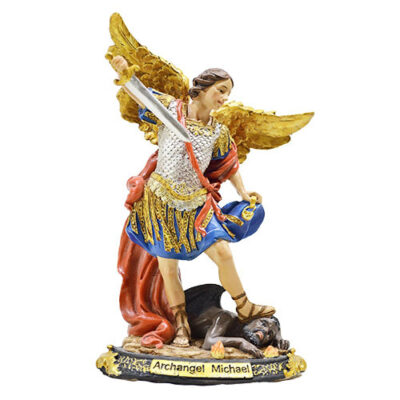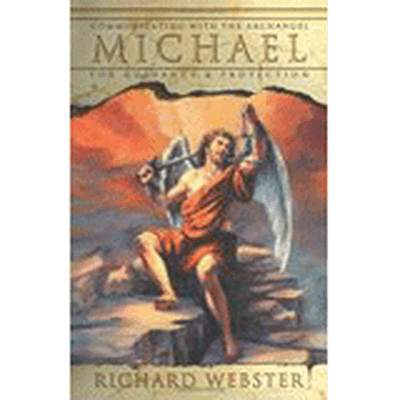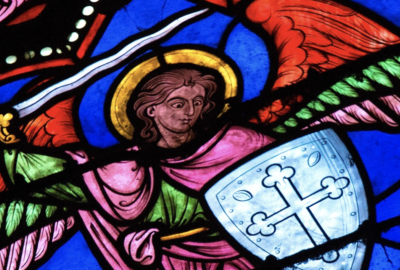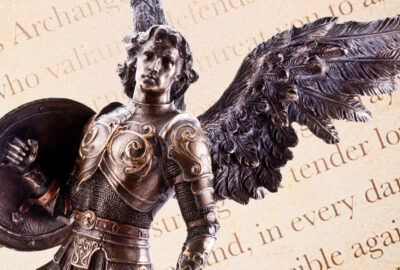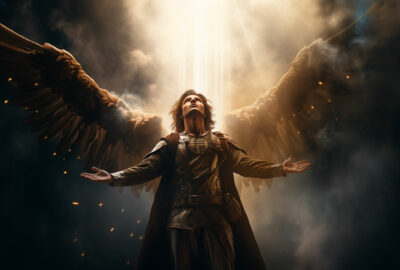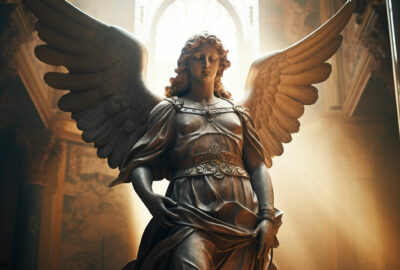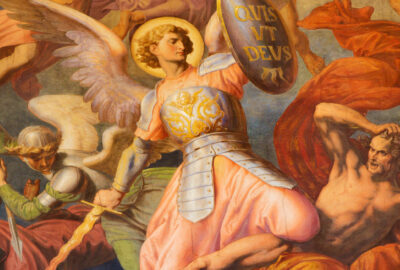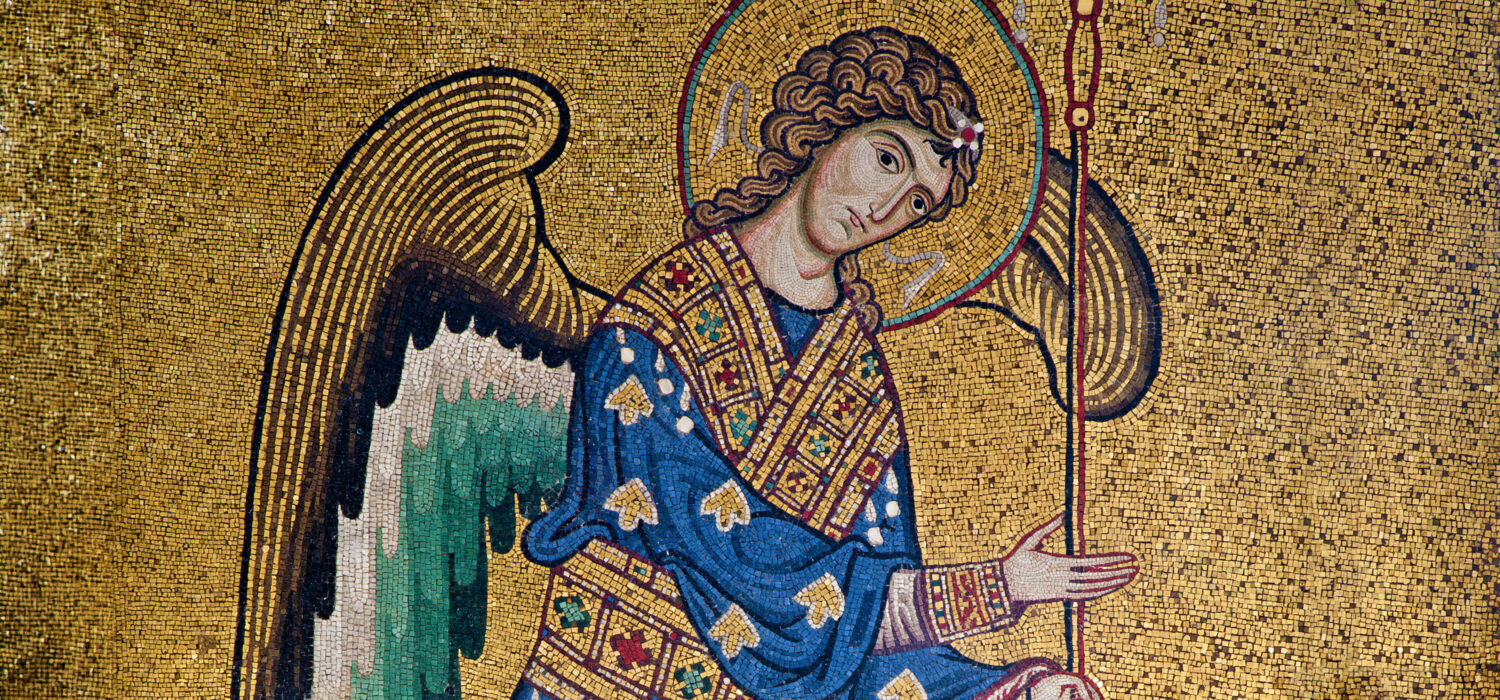
Are You Ready For The Feast of St. Michael?
St. Michael’s Feast, a celebration of the beloved archangel Michael, is celebrated on September 29. Also known as Michaelmas, this feast day pays homage to St. Michael, St. Gabriel, and St. Raphael. It is the oldest of all angel festivals.
St. Michael is known as one of the seven archangels of the Catholic Church. He repeatedly fought the Devil and ultimately banished him from heaven. Depicted as a warrior dressed in a shield and helmet, St. Michael defends the church from evil. He carries a double-edged sword, representing truth and justice. He is also known as the angel of death and is said to carry the souls of the dead from earth to heaven.
St. Michael is called upon to ward off evil. Statues and candles depicting St. Michael are prayed to when invoking his power. Saint Michael rosaries, necklaces, and medals are worn to protect against negative forces. The following prayer is widely recited when praying to St. Michael...
St. Michael the Archangel,
Defend us in battle.
Be our defense against the wickedness and snares of the Devil.
May God rebuke him, we humbly pray,
and do thou,
O Prince of the heavenly hosts,
by the power of God,
thrust into hell Satan,
and all the evil spirits,
who prowl about the world
seeking the ruin of souls.
Amen.
St. Gabriel is also celebrated on this day. Meaning “Man of God,” Gabriel is known to be a messenger who brought important messages to those in the Old and New Testament. He is often shown carrying a spear in his right hand and a mirror with an X (the first letter in the Greek word for Christ) in his left hand. He is the patron saint of communication workers, messengers, and postal workers.
The third saint honored on St. Michael’s Day is St. Raphael. The patron saint of travelers, the blind, and those in the medical profession, Raphael is depicted in the Bible as having restored vision to Tobit. His name means “God heals” and he is worshiped by the sick and infirm.
The Mass that Celebrates Michael
Michaelmas, the mass that celebrates Michael, takes place around the time of the fall equinox. This is not a coincidence. Ancient worshipers believed that the shorter days and long, dark nights meant St. Michael’s protection was needed in the fall and winter months more so than during any other time of the year. It was also thought that the dark forces were more powerful during the late months of the year and that defense from these negative energies was vital at that time.
This holy day has special meaning to Christian worshipers all over the world. The Irish believe that disease and sickness decrease after St. Michael’s Day. In England, September 29 is the start of a new quarter, at which time new politicians are elected, new contracts are signed and a new school year begins. The three other ‘quarter days’ acknowledged in England are Lady Day (March 25), Midsummer (June 24), and Christmas (December 25). Farming and harvests were to be completed by Michaelmas, as the weather was no longer suitable for crops.
The Feast of Saint Michael
Catholics around the world celebrate Michaelmas in a variety of ways. In England and Denmark, a wine known as St. Michael’s Love is drunk in honor of the saint. In Northern Spain, an image of St. Michael is brought from the national shrine to various churches for worshipers to see and pay their respects to. German Catholics put on plays and parades in celebration of the archangel. As he is the patron saint of horses, Scotland pays tribute to St. Michael by holding horse racing competitions.
A traditional meal of roast goose with apples and carrots is cooked on this feast day. St. Michael’s Bannock, a sweet bread originating from Scotland, is baked and served on this holy day. Blackberries are served as a reminder of Lucifer’s fall from heaven into a blackberry bush.
The Michaelmas Daisy (an aster) blooms in late September and is associated with St. Michael’s Feast. Associated with loyalty and honesty, these flowers are symbolic of Saint Michael and his unwavering protection of the Catholic Church.
A Simple Ritual For Saint Michael's Day
Saint Michael is celebrated for his protection and valor as one of the chief archangels. On Michaelmas, near the autumnal equinox, we commemorate his influence and blessings. This ritual can help you connect more deeply with the Archangel Michael, seeking his protection and strength. Before starting this ritual, gather the following ritual components:
- 7 Swords of Saint Michael (7 Espadas de San Miguel) Candle
- Saint Michael Incense
- A quiet, sacred space for prayer
Begin by setting up your sacred space. This can be a quiet corner of your home, an altar, or any place where you feel connected spiritually. Cleanse this area with the incense or sage, letting the smoke envelop the space and purify it of any negative energies. This cleansing act is a prelude to a powerful prayer ritual, setting the right ambiance.
Next, place the 7 Swords of Saint Michael Candle in the center of your space. As you light it, visualize the protective aura of Saint Michael surrounding you. This candle is believed to grant victory over one's enemies and challenges.
With the candle burning, take a moment to meditate on Saint Michael's attributes - his strength, protection, and courage. Silently or out loud, say the following prayer to Saint Michael, asking for his guidance, protection, and blessings for the coming winter season:
Saint Michael, mighty Archangel, defender of the heavens and protector of the righteous, As the days grow shorter and the nights colder, I humbly approach your radiant presence. Guide my path through the challenges of the coming winter, Shield me from harm, both seen and unseen, And grant me the strength to face the adversities ahead.
In the silent, frosty nights, be my beacon of hope, In the cold, bleak days, be my warmth and solace. Bless my home and loved ones, keeping them safe from harm, And wrap us all in your wings of protection, ensuring our well-being and peace.
Saint Michael, champion of the celestial realm, Grant me the fortitude to weather the trials of the season. Infuse my spirit with courage, resilience, and faith, And may your blessings be abundant in every snowflake and every gust of wind.
As winter unfolds its tapestry, let your presence be ever felt, Guiding, guarding, and granting grace in every moment. Amen.
Conclude the ritual by expressing gratitude for Saint Michael's ever-present protection. Let the candle burn safely until it is fully consumed or snuff it out with the intention of relighting it for future rituals.
Remember, the power of this ritual lies in your intent and faith in Archangel Michael's protective energies. Celebrate this day with reverence, and let his blessings guide you throughout the season.
